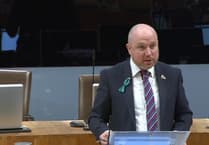More than 50,000 North Wales patients have waited in excess of nine months for treatment to start according to the latest figures – but the number is reducing.
Statistics up to January this year show more than 221,000 patients across Wales have waited longer than 36 weeks since referral to be seen by clinicians.
It shows the stark effects of the pandemic on normal hospital business but the good news is figures are starting to fall in North Wales.
A years ago Betsi Cadwaladr health board had a waiting list of 100,764, with the procedures of 77,302 delayed by up to 26 weeks.
A further 11,034 had been on the list between 26 and 36 weeks.
Twelve months on to January this year and the total waiting list had only increased by around 13,000, perhaps signalling fewer people than normal contacted GPs because of the pandemic.
The biggest change comes in the length of time people have been waiting with 50,143 of those currently on the list for at least nine months, while a year ago that figure was 12,248.
The heartening news is after nine months of increases during the worst of the pandemic, when most elective treatments all but stopped, the figure reduced by more than 1,700 in the two months from November 2020.
Staff have been looking to address the most clinically serious cases first, which does not always mean those waiting longest.
However, the board’s focus on those clinically most in need does mean the overall numbers waiting decreased for the first time in nine months in January – by more than 1600 patients.
Gill Harris, Betsi’s deputy chief executive, said: “Covid-19 has had a significant impact on services throughout the NHS, in particular on our ability to provide planned care.
“We know this is a worrying time for people waiting for treatment.
“We continue to monitor our waiting lists to ensure people with the highest clinical need are prioritised for treatment at the earliest opportunity.
“We are working to develop plans to increase our capacity for reducing waiting times.
“This includes looking at more activity over evenings and weekends, and sourcing additional capacity for scanning and assessment of patients.
“In the longer term, we are developing diagnostic and treatment centres which help us tackle backlogs, alleviate pressure on our district general hospitals and treat highly vulnerable patients without interruption from pressures in unscheduled care.”





Comments
This article has no comments yet. Be the first to leave a comment.